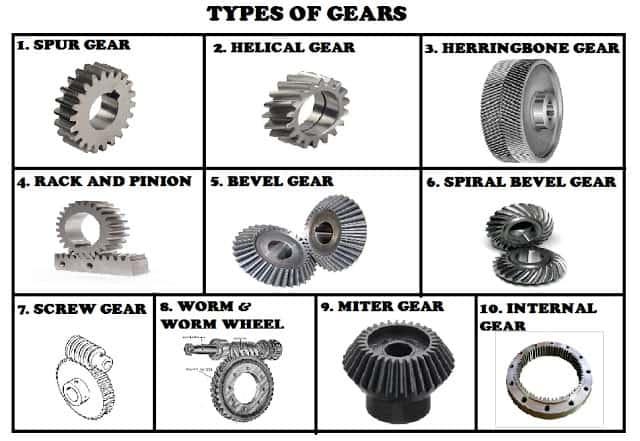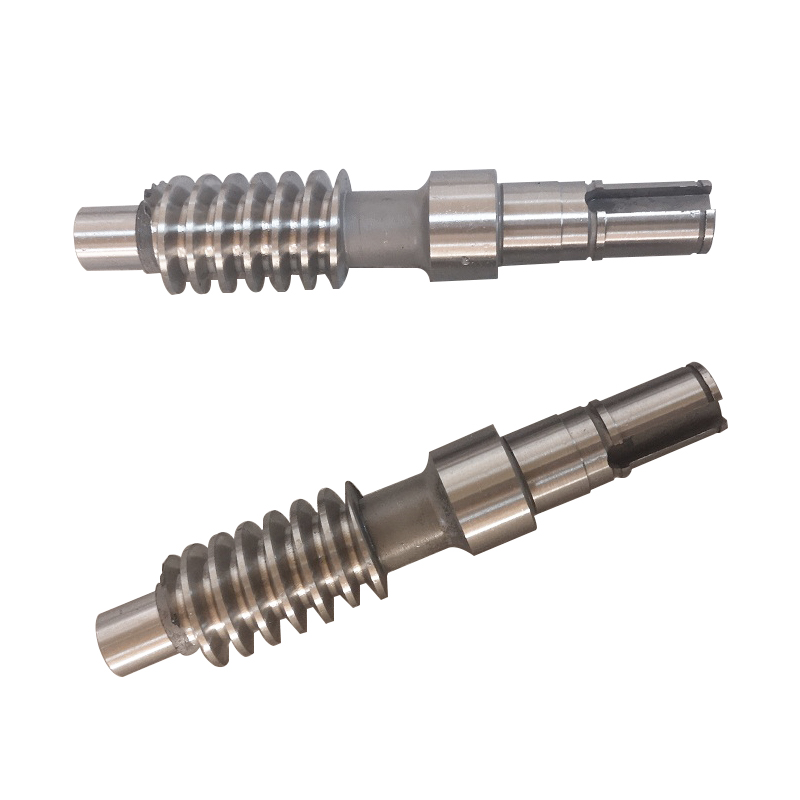Types of Gears, Gear Materials, Design Specifications, and Applications
Gears are essential components for power transmission. They determine the torque, speed, and rotational direction of all driven machine elements. Broadly speaking, gears can be classified into five main types: spur gears, bevel gears, helical gears, racks, and worm gears. The selection of gear types can be quite complex and is not a straightforward process. It depends on various factors, including physical space, shaft arrangement, gear ratio load precision and quality levels.

Types of Gears Used in Mechanical Power Transmission
Depending on industrial applications, many gears are manufactured using different materials and performance specifications. These gears come in various capacities, sizes, and speed ratios but generally function to convert input from a prime mover into output with high torque and low RPM. From agriculture to aerospace, and from mining to the paper and pulp industries, these gear types are used across almost all sectors.
Spur gears are gears with radial teeth used for transmitting power and motion between parallel shafts. They are widely used for speed reduction or increase, high torque, and resolution in positioning systems. These gears can be mounted on hubs or shafts and come in different sizes, designs, and shapes, offering various features and functionalities to meet different industrial requirements.
Bevel Gears
Bevel gears are mechanical devices used for transmitting mechanical power and motion. They are widely used for transferring power and motion between non-parallel shafts and are designed to transmit motion between intersecting shafts, usually at right angles. The teeth on bevel gears can be straight, spiral, or hypoid. Bevel gears are suitable when there is a need to change the direction of shaft rotation.
Helical gears are a popular type of gear where the teeth are cut at a certain angle, allowing for smoother and quieter meshing between gears. Helical gears are an improvement over spur gears. The teeth on helical gears are angled to align with the gear axis. When two teeth on a gear system mesh, the contact starts at one end of the teeth and gradually extends as the gears rotate until the two teeth are fully engaged. Gears come in different sizes, shapes, and designs to meet customer specifications.
Rack and Pinion Gears
Rack and pinion gears are commonly used to convert rotational motion into linear motion. A rack is a flat bar with teeth that mesh with the teeth of a small pinion gear. It is a type of gear with an infinite radius. These gears are designed to fit various applications.

Worm Gears
Worm gears are used in conjunction with worm screws to significantly reduce rotational speed or allow for higher torque transmission. They can achieve higher gear ratios than gears of the same size.
Sector Gears
Sector gears are essentially a subset of gears. These gears consist of numerous parts and are a segment of a circle. Sector gears are connected to the arms of water wheels or drag wheels. They have a component that receives or transmits reciprocating motion from the gear. Sector gears also include a sector-shaped ring or gear, and the periphery is also gear-toothed. Sector gears come with various surface treatments, such as untreated or heat-treated, and can be designed as single components or as entire gear systems.
Gear Precision Levels
When classifying gears of the same type according to gear precision, precision grades are used. Precision grades are defined by various standards such as ISO, DIN, JIS, and AGMA. JIS precision grades specify tolerances for pitch error, tooth profile error, helix angle deviation, and radial runout error.
Materials Used
These gears can be made from high-quality materials including stainless steel, steel, cast iron, hardened steel, and brass, depending on the application.
Applications of Helical Gears
Gears application are used in fields where high-speed, high-power transmission or noise reduction is crucial, such as in: Automotive,Textiles ,Aerospace Conveyors,Industrial engineering,Sugar industry,Power industry,Wind turbines,Marine industry etc
Post time: Sep-03-2024




